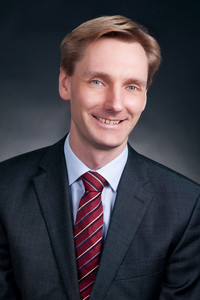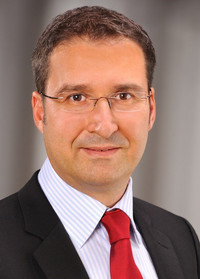Reducing Costs through Integrated Design and Operational Optimization of Factory and Production Buildings
Building production facilities in new markets is an endeavor with multiple challenges. Within these projects, buildings today are much more than just the shell for the core business activities. With growing energy rates, the need for defined production environments, as well as an increasing competition for a skilled workforce in the Asian countries, building energy-efficient and quality workplaces has become a cornerstone for local competitiveness.
Investing overseas
The foreign investment of German companies is higher than ever before. According to a recent DIHK survey, 49% of the German manufacturing industry is planning to invest overseas with growing total investment volumes. While the Eurozone is still most attractive, China is in second position (together with North America) followed by the Asia Pacific region. This trend can be observed in all industry sectors and for all sizes of companies. It is a vital part of the current international development strategy of many companies of the German Mittelstand.
Challenges and Opportunities
While the large players often can rely on long experience overseas and an internal infrastructure for international expansion, the challenges for the companies of the German Mittelstand are significant. Not only does the core business need to be organized, but the production facilities and infrastructures also need to be developed. At the same time the focus of the investment is changing. While in the past low production costs and the large available workforce was the driver for foreign investment, today the access to increasingly interesting markets in the growing economies in the Asian region ist what motivates companies to set up a local presence. In this regard, according to the DIHK survey, it is increasingly the energy costs and availability of a well-educated and skilled employees that is of concern to German management. On the other hand, increasingly demanding customers request locally made “German quality”, which requires defined and controlled production environments. In all countries in the region, energy costs will rise in the mid-term and the market for a skilled workforce is getting increasingly competitive. In this situation, energy-efficiency is an important strategy for operational cost control. Workplace quality and not at least a functional and representative building are essential when it comes to future business strategies for German foreign investment.
Building Quality in Difficult Markets
German expectations of a coordinated design and construction process with transparent communication and decision-making processes are often not met by the Southeast Asian pragmatism and desire of avoiding confrontation. Furthermore, the clients’ management often has unreasonable expectations regarding the timeline of the construction and cost of good design. While the design and construction management fees are the smallest part of the investment in factory building projects, saving costs at the wrong end might result in over sizing, third-party product selection, biased tendering or simply unoptimized design solutions based on unsuitable design templates.
A lack of creative input and out-ofthe- box thinking often leads to architectural solutions that are not sustainable in terms of floor layout or a flexible and improved production flow. Architectural measures to reduce the energy consumption such as shading, daylight integration and sufficient thermal insulation, which should be self-evident in a sunny and hot climate, are disregarded due to higher initial costs. With the least expensive designer, there are no resources to make a thorough cooling load or lighting calculation. This usually leads to significantly oversized air-conditioning and lighting systems with additional investment costs that are several times higher than the saved design fee. Furthermore, oversized air-conditioning and lighting systems lead to higher operating costs and reduced lifetime of the technical systems. A reasonable timeline, especially during the conceptual phase, and sufficient design fees enable an integrated and thorough design approach, which avoids problems during the design and construction, and enables transparent decision making, reduced life-cycle costs and an improved overall building quality.
Especially in markets with less advanced building standards and of ten insufficient understanding of the required quality, building certification systems, such as the well-known American LEED or the more comprehensive German DGNB system can be instrumental in managing the required quality. The primary aim is not to achieve a high rating, but to define the scope of the sustainable building project. Adapted to the local conditions and applied by experienced consultants, these systems can be useful in difficult markets.
Efficient Building Performance
Besides the design, sizing and technology of building services systems and the quality of the building structure, the operation of the buildings and systems is paramount for dayto- day energy efficiency and reliable building performance. Simple settings, such as lighting controls, set point temperatures and operation times for the ventilation systems need to be controlled and regularly readjusted to ensure cost-optimized and functional operation. For instance, wrong operating times and air volume settings on ventilation and conditioning systems can easily increase the energy bill by 30% under the tropical climate conditions in Asian countries. Simple technical interventions for lighting control and daylight integration or changing of inefficient ventilators and pumps are cost effective measures with short payback times. In all cases the effort and costs for building audits are well invested when low or even no-cost improvements are identified.
Integrated Design and Operational Optimization
During the definition and concept phase, various design options are developed and assessed using computational simulation software with regard to energy consumption, thermal and visual comfort, life cycle costs and functionality. The goal is to find the economical and functional optimum without disregarding the environmental or workplace qualities of the new building. After the design is finalized, the quality has to be secured by closely managing construction design, tendering, construction, commissioning and operation during the first year. The goal is to ensure that the initial requirements of the owner are not only incorporated into the architectural and engineering design but also implemented on the construction site and maintained during commissioning and operation. This is achieved through regular participation in design and construction meetings, construction site visits, commissioning management and measurement & verification during the first year and implementing energy audits for optimal operation.
Factory and Production Buildings
EGS-plan international GmbH and its associated offices energydesign in Shanghai and EGS-plan in Bangkok have delivered multiple factory building projects as energy-focused and sustainable building consultants. In a project in China for EMAG in Yintan (43,000 m² GFA), the energy concept and the design of the energy systems was delivered by the EGSplan head office in Stuttgart and implementation in China was controlled by a German EGS engineer. For the VOITH Fabrics Extension plant in Kunshan (23,000 m² GFA), the concept design for the energy systems has been developed locally by energydesign. Complex systems, such as the central heating plant with CCHP, were designed in Stuttgart, while the conditioning systems were designed by energydesign. The entire design and implementation process was managed with a LEED certification process administered by energydesign. The energy and sustainability concepts of the new factory buildings for Pandora in Lamphun (27,500 m² GFA) and Grohe (18,800 m² GFA) in Klaeng were designed by EGS-plan (Bangkok) Co., Ltd. The Pandora factory is a fully air-conditioned green factory with ambitious architecture and was awarded a LEED Gold certification. The main goal of the design of the Grohe factory was to find a good balance between the economic, functional and environmental quality of the building. The only building certification system which supports such an approach is the German DGNB system. The building has been awarded a DGNB silver certification.

